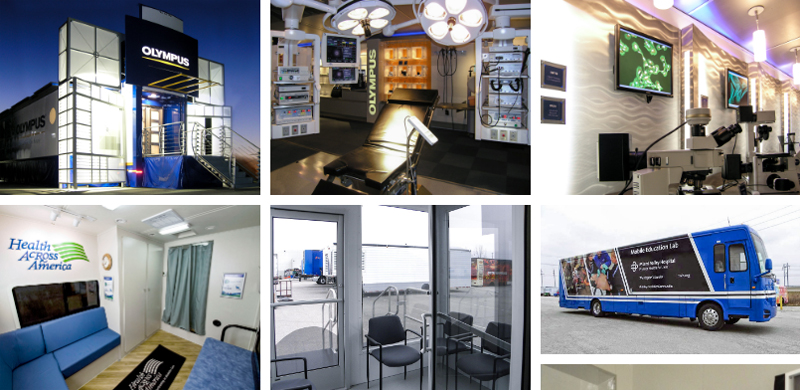
While some of these access gaps can only be closed by the government, hospitals and healthcare centers also have a role to play. Read on for brilliant ideas hospitals can adopt to improve healthcare access for patients:
1. Introduce mobile clinics.
Many people across the US live in health deserts and are facing numerous socioeconomic and geographical barriers to proper healthcare. According to a report by the Advisory Board, common barriers include:
- Lack of insurance coverage
- Lack of trust in healthcare
- High healthcare costs
- Absence of means of transportation to hospitals
- Isolation, economic, language, cultural, and racial barriers
If you operate a clinic and don’t know where to start with mobile medical care, the first step should involve finding a mobile medical trailer. There are many types of trailers out there, and it’s best to ensure the one you purchase is made specifically to serve as a mobile clinic. Trailers such as the ones offered at https://www.craftsmenind.com/mobile-medical-trailer are customizable to fit the specific purpose they serve.
By operating a mobile clinic, you’re not just saving a fortune and increasing profits. You’re also helping the most vulnerable patient populations in the country access a basic need.
2. Offer shared medical appointments.
One major problem healthcare centers face is the lack of capacity to attend to every patient seeking healthcare services. Hospitals can develop a system where patients are put in groups and offered shared appointments since some conditions are shared among several individuals. This would be particularly viable for conditions such as asthma and diabetes, whose management techniques are similar across patients.
By allowing doctors to care for 10-20 patients at once, you’re creating room for patients with more specific health issues to be served.
3. Turn to telehealth.
The healthcare industry is one of the biggest beneficiaries of the technological advancements of recent times. Not only has the accuracy and success rate of medical procedures increased, but healthcare access has also improved incredibly.
Medics can now offer medical services without necessarily scheduling an in-person appointment with the patient. Through videos, both live and recorded, doctors can share medical advice with their patients on managing diagnosed conditions.
This is advantageous to both the patient and the healthcare provider. The patient doesn’t have to drive to the clinic to see the doctor, and the doctor doesn’t have to repeat themselves over and over as they can record videos and share them with multiple patients.
4. Invest in translation technologies.
A whopping 25 million Americans have limited English proficiency and may require translation services during hospital visits. While the law requires all federally funded clinics and hospitals to have translators for their patients, not many patients end up receiving such help. Some get it, but from people who haven’t been trained to serve as medical interpreters, which can lead to costly miscommunications.
Thankfully, with technology, human interpreters in both government-funded and private clinics have been minimized. There are several mobile applications developed specifically for medical translation purposes. Of course, these can be riddled with inaccuracies, but they are a good option for small clinics that can’t afford professional translation services.
5. Set up an informational website.
As implied above, congestion in clinics can hinder proper access to healthcare services. Unfortunately, not everyone in the hospital queue actually needs to be there. Some want to ask simple questions that really shouldn’t involve a doctor.
Setting up a comprehensive website where patients can learn about diseases and make small inquiries can save both doctors and patients lots of time and money. A good medical website should contain information on common health conditions, including symptoms, complications, and when it is necessary to see a doctor.
There should also be an inquiry section where patients can ask for information that hasn’t been provided in the website.
6. Make sure staff members know their roles.
Some of the problems associated with reduced healthcare access for patients arise from within the hospitals themselves. Lack of coordination between departments and staff draws out simple procedures, locking patients away from receiving care.
When employees don’t understand their roles, some processes may be neglected, and everyone believes it isn’t their responsibility.
Hospital administrations should ensure the roles and responsibilities of each department and individual within the facility are well-defined. Training should be offered to every new employee, and any changes should be communicated effectively. That way, everyone will know their role, and specific departments can be held accountable for gaffes.
7. Partner with student-run clinics.
Medical student-run clinics often serve in impoverished areas and offer healthcare services to under served populations, who may otherwise not receive such services.
Sometimes referred to as neighboring health projects or homeless health projects, student-run clinics don’t always have the equipment and funding needed to operate smoothly. Most depend on donations to pay bills and cover the costs of obtaining medication and equipment as most of their services are free or low-cost.
Funding such clinics or providing them with essential equipment can go a long way toward ensuring the less fortunate in under served areas receive essential health services.
You can also create a program where the clinic handles less severe problems and forwards the more complicated ones.
This kind of partnership can smooth out operations in both facilities and ensure either practice does what it’s best suited for.
End note
Healthcare access is still a significant problem for people from certain backgrounds and locations across the country. Established healthcare centers can remove these barriers by making themselves more available to individuals with various health issues. The above tips provide an excellent place to start if you run a hospital or clinic and want to take part in the cause to make healthcare more accessible to everyone.
Comments
comments